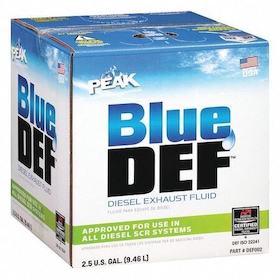
Curated with aloha by
Ted Mooney, P.E. RET

The authoritative public forum
for Metal Finishing 1989-2025

-----
How to Get Aged Look on Galvanized Roof
Q. I have a covered bridge with a typical corrugated galvanized steel roof... I want to lose the shiny, new look of the steel to make it look old and rustic. How can I do this without contaminating the water under the bridge?
Thanks,
Jeff Urban- North Royalton, Ohio, USA
2001
A. I have seen a slurry of fine pumice ⇦ this on eBay or Amazon [affil links] used with tampico brushes, to mechanically polish down the shine of zinc and other hot dip coatings (during the sheeting manufacture, not after installation). Using a very fine - grade FFF pumice, should result in a pewter-like finish. It is not expected that the slurry will pick up any appreciable zinc off the sheet surface, but thinking environmentally, it might be best to arrange to rinse the slurry off the roof and collect it for proper disposal.
Your call, and this will take a lot of labor, I'm sure. Someone working with such roofing may give you an estimate of how long nature will take to give about the same finish. My estimate would be a year, or less.
Good Luck.
W. Carl Erickson- Rome, New York
2001
A. I have done a few Mexican restaurants that have this look, the electrical conduit was washed with sulfuric acid/water solution and I think the tin roofing was washed with the same. I have heard that Hydrofluoric Acid may be used but be very careful with this extremely dangerous acid. It will eat glass.... I would suggest testing of several solutions before trying on your project.
Good luck.
Craig Calhoun- Houston, Texas
2001
----
Ed. note: Thanks Craig, but hydrofluoric acid has no role in this at all and is the most dangerous material you can imagine. Please see the entry of December 1, 2010 and don't even consider hydrofluoric acid.
A. Have used vinegar ⇦in bulk on eBay or Amazon [affil links] , bleach, strong salt solution, the main thing is you need "acid". I have never used any acid that would be harmful should my grandkids be around while I have worked on tin in the past. Set the tin on your drive way, pour on a vinegar & salt & let it set.... no scrubbing. Just be careful where you wash the salt off to, it will kill your plants.
Kele Robers- Ft. Worth, Texas
2003
Treatment &
Finishing of
Aluminium and
Its Alloys"
by Wernick, Pinner
& Sheasby

(note: this book is two volumes)
on eBay or
AbeBooks
or Amazon
(affil links)
Q. Good day all.
I have been asked to try to find a means of dulling the surface of an installed mill-finish aluminum roof on a house - the neighbours are complaining of the glare from sunlight.
What I have in mind is a conversion coating, e.g., an oxide that can form at ambient temperature on the installed roof. Application should be as for paints - by roller, brush or spray. The solution applied should not be too toxic or dangerous to the environment or to the applicator. I might add that I am about to try out in the laboratory, some of the formulations in the textbook by Wernick and Pinner, The Surface Treatment and Finishing of Aluminum and Its Alloys.
in the chapter on conversion coatings.
Thanks in advance
John E. Leitch- Pietremaritzburg, South Africa
2001
Q. I want to do a project around home using galvanized steel. I've been trying to find some that's old and dull/slightly rusty, but no luck. So I thought I could distress it myself, a friend said to use swimming pool acid. any thoughts?
Pete Lexy- Wrightwood, California, USofA
2004
Q. I would like to find out if there is a way to treat corrugated galvanized roofing to reduce the glare or solar reflectance to a dull finish. I do not want the roofing to rust, I just want to reduce the glare.
David Shubehomeowner - Minturn, Colorado, USA
2005
Q. Just had galvanized awnings added to my homes exterior by a handyman. The only thing I can find to "age" them is in a kit. Surely there is a process, and one can purchase the pieces in the steps.
Ericka N. Gillettehomeowner - Cedar City, Utah, USA
2005
Q. My name is Romualdo de Blas and I live in Bisbee, Arizona. I am a retired architect designing a new house for myself in the historic preservation district of this old mining community. Corrugated steel roofing and siding was commonly used in this district from the 1880's to the 1940's. I want to duplicate the appearance of that weathered material and need to find out if there is a user-friendly product that can be applied to new galvanized corrugated steel that will make it look rusty in a matter of days or weeks. Any suggestions would be appreciated. Thank you.
Romualdo de Blasretired architect - Bisbee, Arizona, USA
2005
A. There's a multi-step painting process by modern masters called metal effects that can be used on exterior metal roofing. I think it's a little pricey if I remember correctly, but it looks really nice. There are a few different finishes available....aged iron, copper patina, etc. hope this helps
It's a 4 step process....a coat of seal over the steel, then a coat of metallized paint that matches the steel over that, then a coat of rust activator (which supposed oxidizes in minutes) and then another coat of seal over that....you can read more about it at the modern masters website under metallic effects. There's also an image gallery with some examples of rust effects used on exteriors.
Shannon Sparks- Springfield, Missouri
2005
A. I have primed galvanized surfaces with vinegar before painting and I have completely removed galvanization with Muriatic acid. Any acid-weak or strong will work at removing the galvanization from sheet metal. The acid from years of rain will remove it, but stronger store bought acids will cause it to rust faster. Rust is nothing more than a burning action taken on the metal by oxidation just as ashes from a fire. The zinc coating just protects iron from oxidation. Remove the zinc with acid.
I've seen movie sets in New Mexico sprayed with varying degrees of diluted Sulfuric acid just a few weeks after construction that looked a hundred years old in a very short while.
building construction supervisor/school teacher - Tahlequah, Oklahoma
2007
A. Try phosphoric acid. It'll knock the glint off of galvanized surfaces and leave them quite dull. Repeatedly soak the panels and rinse with plain water. Phosphoric is a common fertilizer element so it's not dangerous to the ground in the concentrations you'll use. In fact, your grass may grow greener if its soil PH is too high!
You'll need to wear rubber glovesrubber gloves
⇦ this on
eBay or
Amazon [affil links] and protective gear, but it won't hurt you if you get splashed (unless it's the eyes, nose, ears, and so on). I generally apply it with a red scotchbrite
⇦ this on
eBay
or
Amazon [affil links] abrasive pad. Remember to rinse the panels when you're done.
- Camano Island, Washington
July 16, 2008
----
Ed. note: Don't ever use acids or strong alkalis without wearing goggles
⇦ this on
eBay or
Amazon [affil links] .
A. Try using diet Coke, the acid in it will dull even polished aluminum, and it will be environmentally friendly.
Kenny Hibbs- Rockwall, Texas, USA
September 26, 2009
Q. I am trying to renovate a 1930's house, that has a 1900 barn made of tin that is very rusted and very beautiful. I will let you know what works best for me. Thank you for all the information! I want to make the house look like the barn.
Richard Rees- Grass Valley, California
April 2, 2010
! I would be interested to hear the results of any experiments here - I have heard that muriatic acid is the way to go.
RE. HYDROFLUORIC ACID - PLEASE DON'T GO NEAR THE STUFF UNDER ANY CIRCUMSTANCES - this is from wikipedia:
Hydrofluoric acid is a highly corrosive liquid and is a contact poison. It should be handled with extreme care, beyond that accorded to other mineral acids. Owing to its low dissociation constant, HF penetrates tissue more quickly than typical acids. Because of the ability of hydrofluoric acid to penetrate tissue, poisoning can occur readily through exposure of skin or eyes, or when inhaled or swallowed. Symptoms of exposure to hydrofluoric acid may not be immediately evident. HF interferes with nerve function, meaning that burns may not initially be painful. Accidental exposures can go unnoticed, delaying treatment and increasing the extent and seriousness of the injury . . .
- Yucca Valley, California, USA
December 1, 2010
PLEASE FOLKS DO NOT USE ACID UNLESS YOU KNOW WHAT YOU ARE DOING. Acid needs to be disposed of after you have finished and there is no good way of doing that unless you neutralize it with soda ash when done. Even then what do you do with it? I know when galvanized is welded it turns rusty immediately. that leads me to believe that heat can burn it off probably. Use a torch on your metal and see if that works. Or like someone else said earlier try diet coke 1st.
FATHER JAMESON- WEST COVINA, California
April 9, 2011
April 10, 2011
Thanks, Father Jameson, but don't use a torch on galvanized material. Welders who weld galvanized metal and inhale the zinc fumes get flu-like symptoms called "metal fume fever" -- which you can read more about by searching our site for that term.
Regards,

Ted Mooney, P.E.
Striving to live Aloha
finishing.com - Pine Beach, New Jersey
Q. How long will it take to get the rusty look on tin after acid washing?
Billy c- Belden, Mississippi
November 18, 2012
A. Hi, Billy. I assume we're actually talking about zinc coated steel sheet metal rather than tinplate or solid tin. But once the zinc is gone, rust will occur as soon as the same day or next day.
Vinegar plus salt, or diluted household bleach ⇦ bleach/sodium hypochlorite in bulk on eBay or Amazon [affil links] are probably a bit safer than sulfuric acid or muriatic acid. Good luck.
Regards,

Ted Mooney, P.E.
Striving to live Aloha
finishing.com - Pine Beach, New Jersey
November 19, 2012
Q. I am looking for a way to put a greenish patina look on two accent roofs on a custom home. They don't want copper, but want the look of old copper. There is going to be standing seam so there will be about 28 sheets of Bonderized metal 4' X 10', Thanks for any help.
Danny KasingerRoofing - Riverside, California, United States
December 30, 2013
Q. Only days after installing a Galvanneal steel roof on a residence dozens of large dark areas developed over about 25% of the material, producing a checkerboard effect which is very unsightly. My installer tells me it is caused by oxidation and is normal and that eventually all oxidize but it may take a long time.
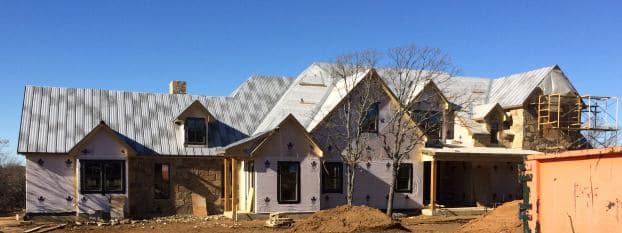
Is there anything I can do to accelerate the process so the roof has a uniform look?
Mac Wesson- Dallas, Texas, USA
January 15, 2014
A. Mac,
I'd be a bit cautious about believing your contractor there, I'd be more concerned that the zinc isn't uniformly applied than getting it to look uniform.
Outside that, mild vinegar solution (1 gal vinegar, 9 gal water) should help speed it along. I'd advise against it though, if it ain't broke, don't fix it.
Blacksmith - Lenoir, North Carolina USA
February 28, 2014
Drips from pre-rusted roof are staining the deck
Q. Prepared galvanized corrugated steel roofing using muriatic acid, and a bleach/salt solution to create an older looking, rusted roofing on pergola. It was sprayed with a hose after a day then the roof was put in place.
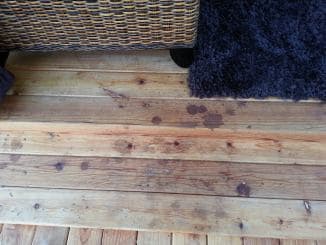

We started getting droplets of white powdery substance all over the new cedar decking causing dark stains.It drops on the furniture as well but comes off with a wet cloth. Not so on the sealed cedar deck. Any ideas how to stop this and what's causing this from the roof and how to get it off the decking? It also runs down the rafters! Help!
Inice Goughart and ambience - Sisters, Oregon, USA
October 4, 2014
A. Hello Inice,
When the roof was nailed or screwed to the rafters where there rubber grommets used to seal around the holes? If they were used, were the screws or nails over torqued so the grommets are not seated properly? Im not trying to be smart but I would address the leaks first so you don't have to keep cleaning furniture and the deck. It could very well be that a portion of the salt / bleach application was occluded in the treated galvanized steel, and was liberated after the roof heated up by the sun. I would assume that the drips appear after a rain. As far as the stains on the cedar deck, you may have to sand. I'm not a wood expert and don't know how porous treated cedar is.
Process Engineer - Phoenix, Arizona USA
October 10, 2014
Q. Yes, thanks. Grommets were used and properly placed and the moisture isn't from the top, but the bottom of the steel. This process has been used before with great success but we read that besides Muriatic Acid, the salt/bleach solution would speed things up. This was a BIG mistake. The muriatic acid had worked beautifully in the past - ALONE. We also agree that the salt/bleach part is the problem. I'm going to clean the rafters with Oxalic Acid and then the deck since my search for a remedy suggested this (I hope!). I'm keeping my fingers crossed this works, and next time stick with Muriatic Acid alone for roofing material!
Inice Gough [returning]art and ambience - Sisters, Oregon, USA
October 13, 2014
![]() Hello again Inice,
Hello again Inice,
I don't have experience with the use of oxalic acid on cedar, and I hope this works for you. It seems odd that the moisture and drips are originating from the underside of the steel, especially if you are certain there are no leaks coming from the top of the roof. I would be interested to know how soon the roof panels were installed after the bleach/salt solution and water rinse process were completed.
Process Engineer - Phoenix, Arizona USA
October 15, 2014
October 2014
That's a good observation that was bugging me but didn't make it to my conscious mind. Is it possible that the topside of the panels was well rinsed, but the bottom wasn't, so the condensation is causing drips of chemicals? Ever notice how slimy bleach is? It's very difficult to rinse.
Regards,

Ted Mooney, P.E.
Striving to live Aloha
finishing.com - Pine Beach, New Jersey
We're curious if the rinse needed to be more like a pressure washer [affil links]! It was left on the driveway 2 days actually, then sprayed with a hose. The next day it was put on. We're in high desert, no moisture really. Condensation was from early morning moisture only, no rain. I'll be doing the experiment with the oxalic acid this weekend. The dreaded droplets seem to have stopped. I'm thinking I might take a strong hose and spray the underside of the roof before trying the oxalic acid just to make sure most of it is off. I'm still thinking the salt/bleach should be eliminated if doing this for roofing material. Curious if this happens often when adding this step. Bad decision on our part. Hindsight 20/20 of course
Inice Gough [returning]- Bend, Oregon usa
October 16, 2014
![]() Oxalic acid worked great! I used a spray bottle for rafters and deck, then came back with a rough sponge. No more salt and bleach for us. We're sticking to muriatic acid alone next time for roofing anyway.
Oxalic acid worked great! I used a spray bottle for rafters and deck, then came back with a rough sponge. No more salt and bleach for us. We're sticking to muriatic acid alone next time for roofing anyway.
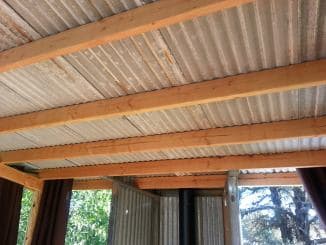
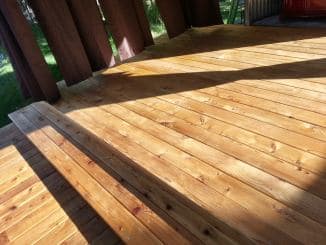
- Bend, Oregon usa
October 18, 2014
Hello Inice,
Thank you for sharing your success. By doing this you have enlightened many readers and responders. We all learn something new every day!
Process Engineer - Phoenix, Arizona
October 20, 2014
Q. I am trying to get the corrugated metal panels to rust. I have degreased the panels, used muriatic acid and let it set for a hour and longer and then sprayed peroxide on the panels and still no rust! What do I do?
Ronda Bromm- Tekamah, Nebraska USA
January 21, 2015
A. Try to put a coat of decking oil on the aluminium sheets. Gives an aged look and protects the aluminium sheets, works really well. I would never use acid as it reduces the life span of the roof.
Peter verhoeven- Brisbane, Australia
March 27, 2015
A. Instead of an acid, you should use sodium hydroxide. Some of the commercial oven cleaners ⇦ this on eBay or Amazon [affil links] (e.g. "dirtoff") have concentrated sodium hydroxide as an active ingredient. Spray sparingly from 40 cm distance and you get a great aged effect.
Peter Verhoeven- Brisbane, Australia
March 31, 2015
A. Hi Ronda. If muriatic acid did nothing, when we all know that zinc reacts instantly with it, I'd start to suspect that the panels are painted rather than galvanized. There are a lot of faux finishes on roofing sheet these days. I once visited a plant that roll-coated the roofing sheeting with paint in every faux finish you can imagine.
Regards,

Ted Mooney, P.E. RET
Striving to live Aloha
finishing.com - Pine Beach, New Jersey
April 2015
Q. What process can I use to dull a new corrugated aluminum fence with wood framing that divides my yard from a neighbor? Is the process different than all the above suggestions for a galvanized roof?
Judy Dwyer- Duluth, Minnesota, USA
August 31, 2015
August 2015
A. Hi Judy. Does a magnet stick to it? If it doesn't, it's solid aluminum. If it does, it's aluminized steel (assuming you are right that it's not galvanized).
If it's solid aluminum, spraying it with oven cleaner (caustic solution) should dull it. Note that this is dangerous and environmentally questionable. You must wear at least goggles ⇦ this on eBay or Amazon [affil links] and rubber gloves ⇦ this on eBay or Amazon [affil links] , while making sure no children or animals are around. Then you must rinse into a trough to capture the caustic and neutralize it with vinegar (most people think that consumers and homeowners should not mess with strong chemicals this way, and they'll foam a lot more than you expect).
If it's aluminized steel, I'd be concerned about losing most or all of your rust protection. Good luck.
Regards,

Ted Mooney, P.E. RET
Striving to live Aloha
finishing.com - Pine Beach, New Jersey
A. Haven't tried this on galvanized yet, but I know that Urea is used to add age and patina to raw copper. While it used to be hard to find, it is now readily available as "Ad Blue" ... the liquid used in today's diesel car and truck engines to turn the NOX into N and O. You can buy it in any auto parts store.
Skip Redman- San Diego, California USA
December 29, 2015
A. Re: White spots from galvanized roofing. Zinc has different levels of oxidation. When left to sit in contact with an anodic material it will form a white chalky oxide and when heated above roughly 1400 °F it will form the toxic zinc oxide mentioned in this thread, which is yellow in color. The prior may have been your problem and the acid may have washed away an anodic material.
In regards to acids. Remember, all acids are compounds with available H+ ions. H+ ions bond to metals and oxidize them. The best acid, assuming equal mol, to dissolve any metal will [almost always] be an acid made of an element that forms the most soluble compound in water after the acid has oxidized the metal.
Strength is another factor, vinegar has a low mol (amount of acid available in solution, essentially) and is also a weak acid (less H+ per mol) sulfuric, nitric, phosphoric (the acid in Coke), hydrochloric are strong acids (H++). Diluted, these strong acids can be used just as safely, obviously because most of you have drank a soda in your life. Always add acid to water. A drop of water may boil if added to concentrated acid.
As for aging: I like a 7" angle grinder
⇦ this on
eBay
or
Amazon [affil links]
with a 50 grit disk. Works great. Drink extra coffee and add 3 eggs to your breakfast. I think salt makes the most natural finish. Plenty of time for more coffee while it works.
Built to Grow, llc, Commercial General Contractor - Eugene, Oregon, usa
February 2, 2016
A. I have found that "EASY OFF" over cleaner in the yellow can works great to remove the zinc coating and accelerate the aging process. The active ingredient is sodium hydroxide. Spray it on thick leave it for three hours then wash it of with clean water. You will need to rinse and wipe several times to get all the white residue off.
Michael vanhoff- Boise, Idaho
November 10, 2016
Tired yet? If not, a similar thread with additional ideas is letter 46671 "Knocking the shine off of new galvanized tin panels".
Q, A, or Comment on THIS thread -or- Start a NEW Thread
